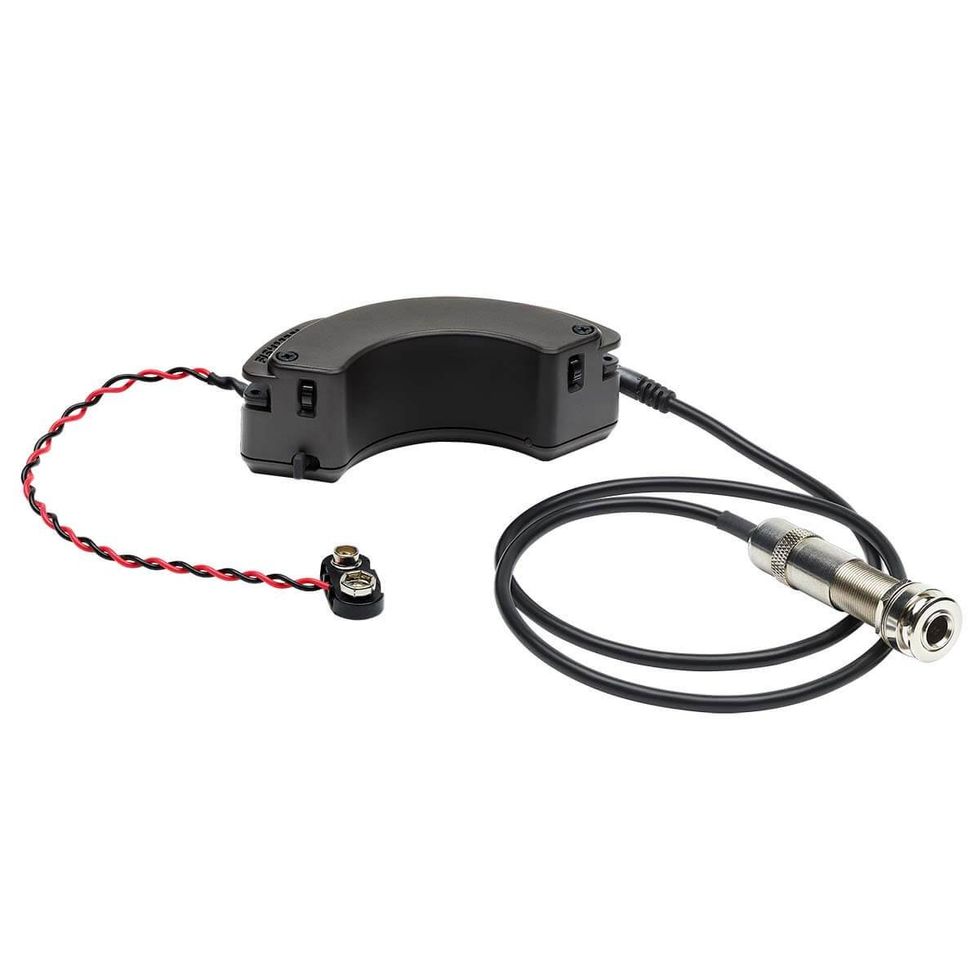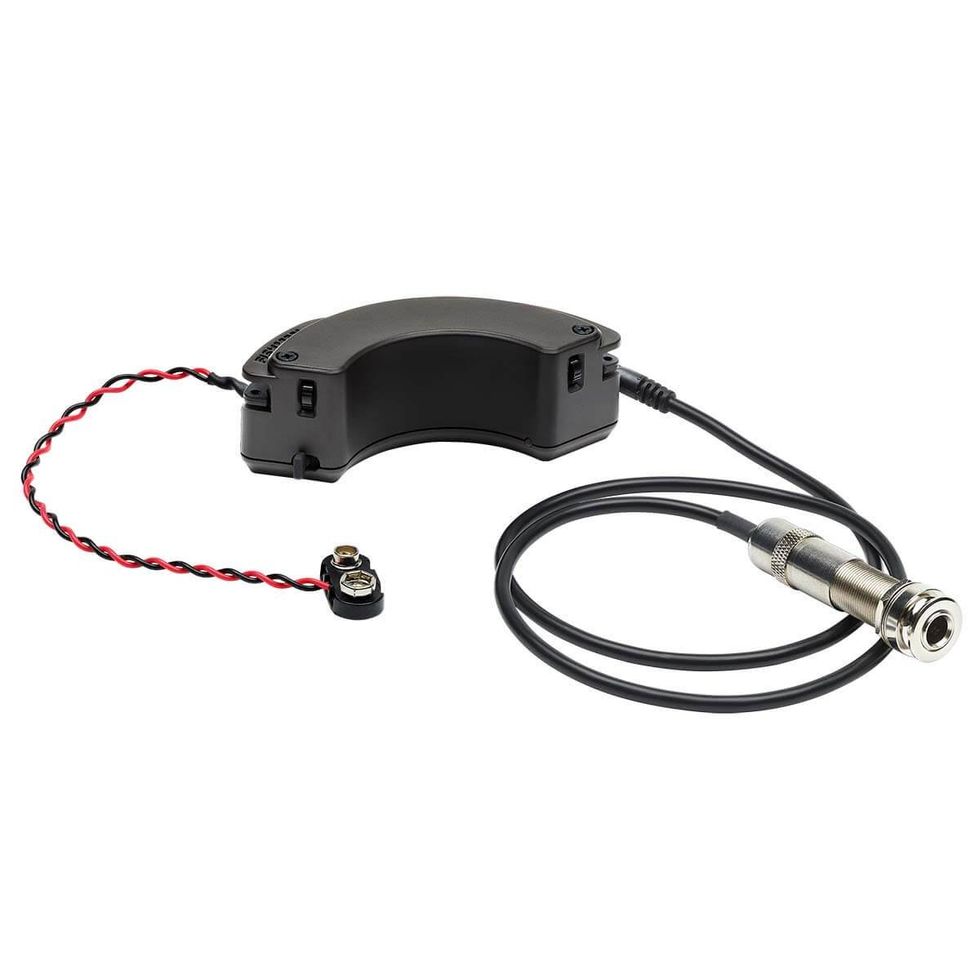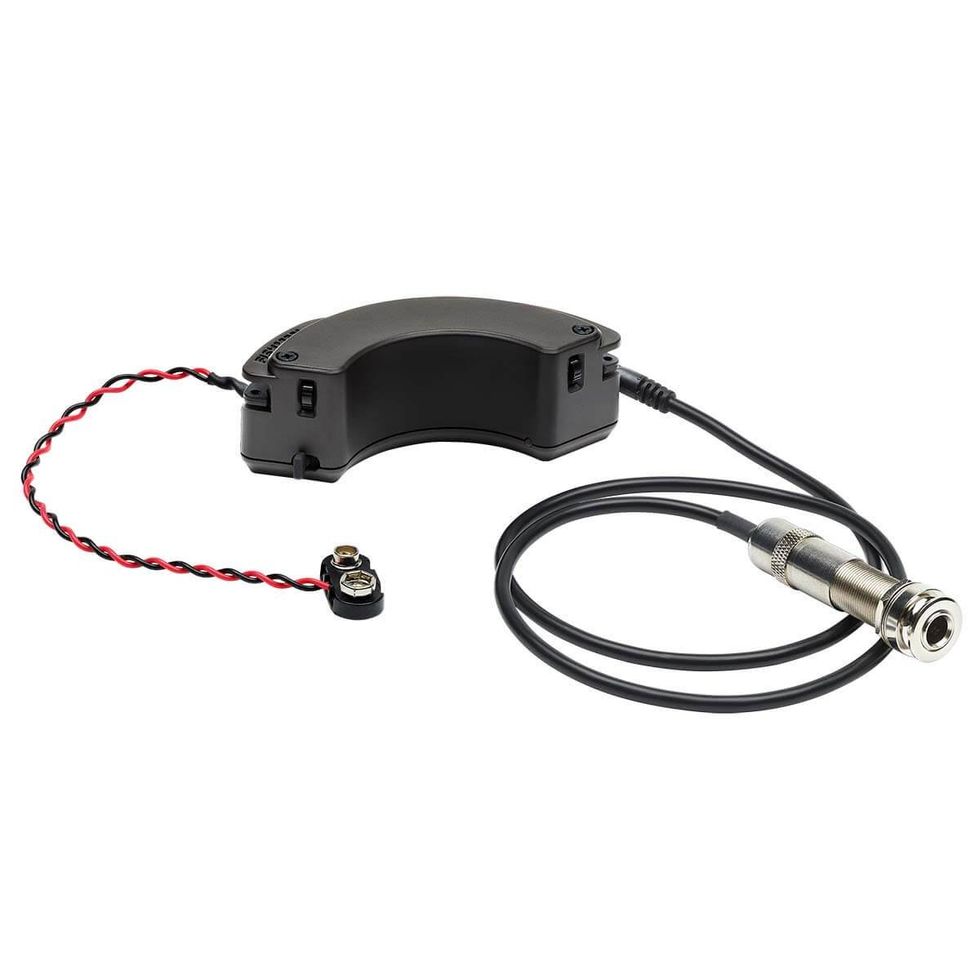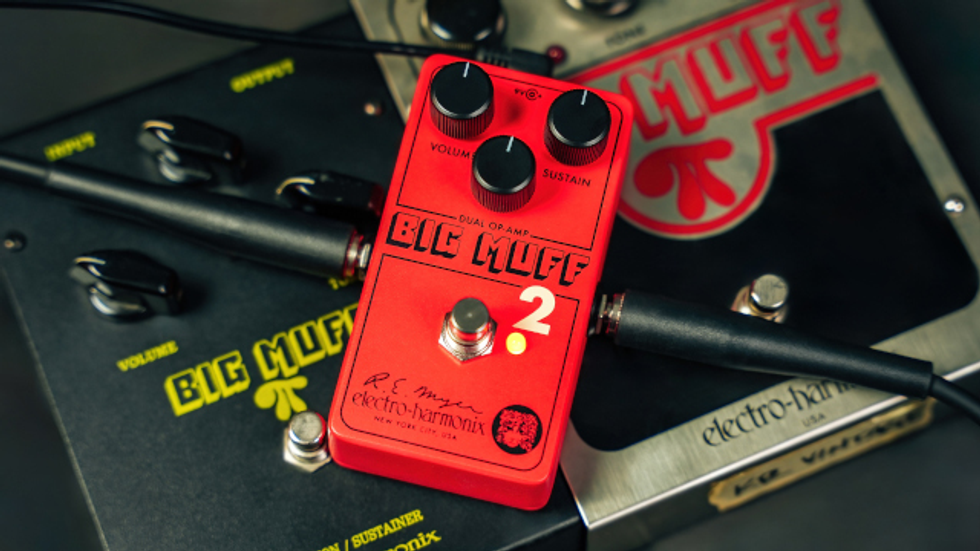| 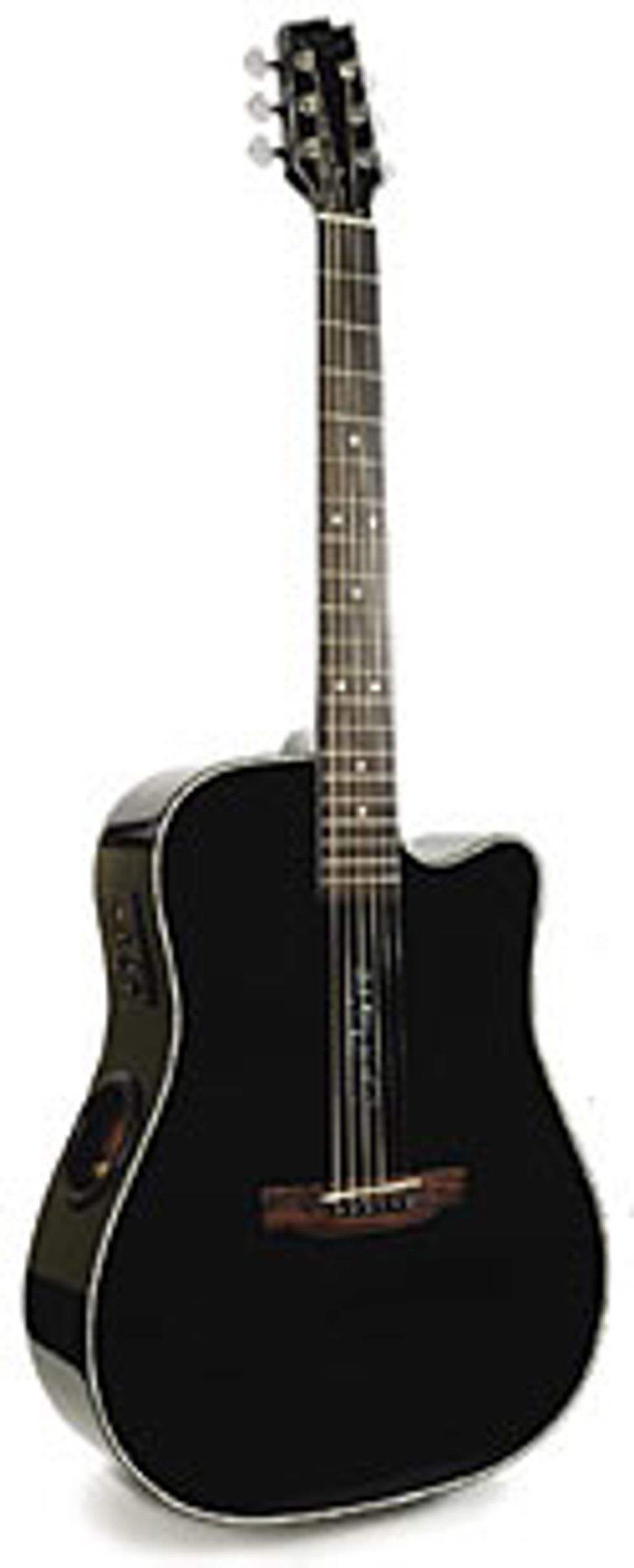 |
Bracing Up
For all of the technological advancements made in the world of guitar luthiery over the past 150 years, the X-pattern bracing system used on a large majority of acoustic guitars has remained a constant. And while traditionalists might wince at anything other than an X, Mike Shellhammer, Guitar Designer for Boulder Creek Guitars, was interested in scratching out a new method of bracing that would increase sustain and vibration. After producing numerous prototypes and logging countless playing hours, he introduced the acoustic community to the Shellhammer Suspended Bracing System (SBS), thus finally supplanting that years-old X.
In brief, the SBS system utilizes featherweight aluminum tone bars that brace themselves vertically to the soundboard’s posterior, as opposed to the traditional X-pattern. This new approach to construction not only provides maximum strength (in terms of supporting the bridge to avoid collapse) but also allows the top to flex and vibrate freely. This essentially turns the board into a massive suspended speaker. If you need more description to properly envision the concept, imagine dropping a piece of aluminum on the ground. It bounces, vibrates and sustains, as opposed to landing with a dead “thud.” Think about a killer vintage Les Paul with a lightweight aluminum tailpiece and an ABR-1 bridge. In my mind, the same principal applies here.
Side Sounds
The Solitaire’s unique visual style mentioned earlier is undoubtedly the first thing you’ll notice. With the sound port located on the upper side of the guitar, this instrument was initially designed with the player in mind, but the end result was an expanded range that increased overall volume, midrange and treble, and resulted in a noticeably enhanced low-end response (remember, the top acts like a giant floating speaker). The non-conventional look of the guitar is quite attractive in my mind, but it may be a turn-off to some. For the player that digs a more traditional look, Boulder Creek does offer the SBS bracing system in their Stage & Studio models.
Within the first few strums, I noticed there was an increase in sound projection; to put it plainly, this thing was louder than I expected. The low-end was full and thick, working nicely with a chimey, articulate high-end. It was apparent that the suspended soundboard isn’t just some marketing gimmick – it flexes and projects. The side sound port is really something to hear, as it vents the music directly towards the player’s ear, meaning that you can hear more of yourself. It could also double as a cup holder if you feel like having a drink while you unwind with your guitar (although, strangely, Boulder Creek doesn’t recommend this).
Friend, colleague and monster player, Brad Carlton and I were discussing the Solitaire’s dynamic range during a recent video shoot and he said it best: “You can hear it ringing with energy – so many modern stringed instruments appear to have something sucking the life out of them, but this guitar sings out nicely.” The guitar has a great range from subtle and soft to robust and huge, and it’s remarkably responsive to the player’s touch.
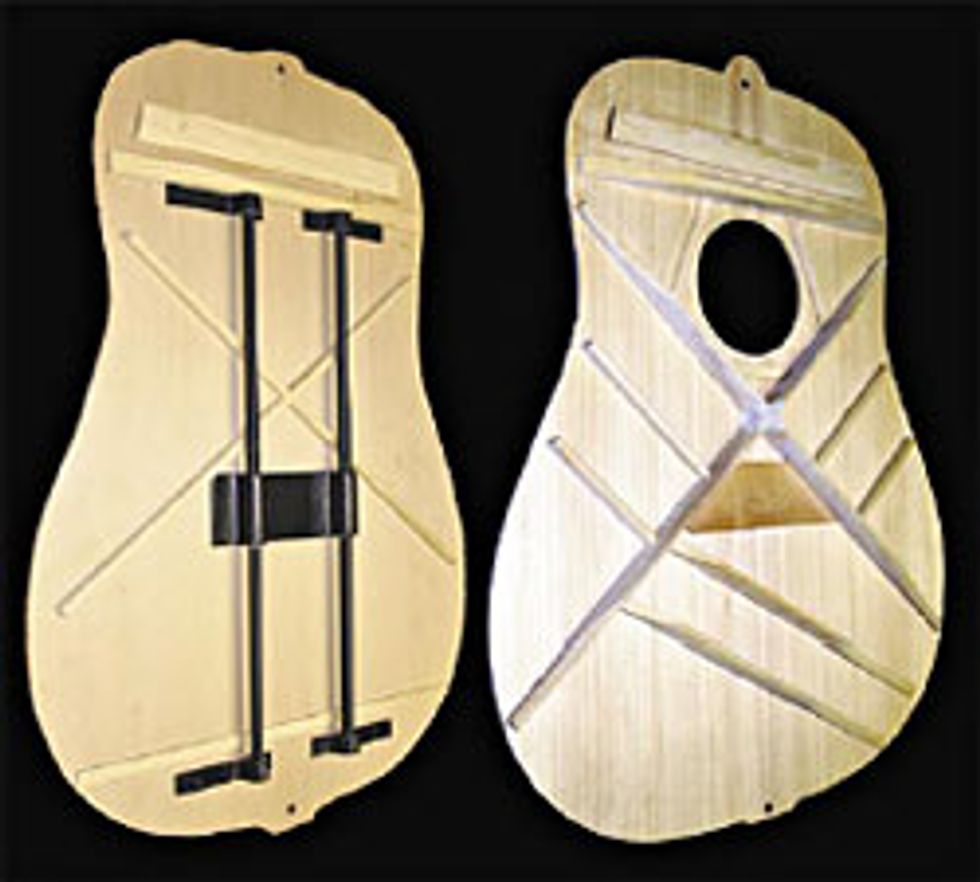 Feel and Features
Feel and FeaturesThe Solitaire I received for review had a nice, medium C-shaped neck profile with a rosewood fretboard. It’s meaty enough for tone and comfort, but not too fat. The action was set to a comfortable medium/low height, but this guitar has plenty of room for any player’s feel, via the truss or by bridge adjustments. I should note that Boulder Creek uses a 2-way adjustable truss rod for maximum control on relief and tension during neck adjustments. The bridge saddles are staggered for better intonation.
The Solitaire series comes equipped with a very quiet AB4-1 onboard preamp system. The player has the option of a balanced XLR or unbalanced 1/4” output. The system utilizes a spiral cable with a flexible, all-inone piezo pickup. I noticed that it had a much more natural sound, free of that synthetic piezo clunk. The AB4-1 system also features a four-band EQ (brilliance, treble, mid and bass) for additional sound shaping.
Finally, I would be remiss if I didn’t mention the Solitaire’s onboard mutable tuner – a killer feature for tuning on the fly live or in the studio. No additional tuner is needed in your chain and the preamp’s output is silent while you are tuning.
The Final Mojo
Unless done carefully, innovation in guitar building can often come off as gimmicky or unnecessary. Boulder Creek has done an excellent job executing a noteworthy innovation that one can feel and hear immediately. The Solitaire is well-made, in terms of construction and quite competitive, giving many guitars at higher price points a run for their money. Players will get a hell of a lot of guitar for the money and the side sound port makes the Solitaire a ton of fun to play on stage or on the couch.
Boulder Creek Guitars
MSRP $999
bouldercreekguitars.com









![Rig Rundown: Russian Circles’ Mike Sullivan [2025]](https://www.premierguitar.com/media-library/youtube.jpg?id=62303631&width=1245&height=700&quality=70&coordinates=0%2C0%2C0%2C0)




